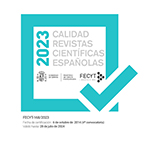El 'monstruo de las toallitas': relacionalidad material en el Antropoceno
Resumen
En los últimos años se viene argumentando desde las ciencias sociales que es necesario prestar mas atención a los objetos, porque no solo los humanos actúan, también lo hacen los materiales. Tomando el ejemplo de la toallita húmeda exploraré cómo pueden actuar los materiales y qué relaciones son relevantes. Para ello movilizaré dos casos, el de la doekje, la toallita húmeda en Holanda, y el de “el monstruo de las toallitas” (la obstrucción del colector norte de Valencia por un atasco formado por una bola de toallitas, grasa y otros residuos). El caso de la toallita húmeda visibiliza que los objetos nunca actúan solos, siempre van a acompañados de prácticas (en este caso prácticas que tienen que ver con la higiene, la caca, y la infraestructura y gestión de los residuos fecales). No es que los objetos tengan agencia sobre los humanos, sino que los ensamblajes de toallitas y otros residuos pertenecen a prácticas concretas (en este caso qué hacemos con nuestra caca) recordándonos que en el contexto de crisis medioambiental es urgente pensar sobre los efectos materiales y semióticos de los objetos. La lección sería aprender a vivir con la abundancia material del Antropoceno de una mejor manera, más que defender que los objetos tengan agencia.
Descargas
Descarga artículo
Licencia
La revista Política y Sociedad, para fomentar el intercambio global del conocimiento, facilita el acceso sin restricciones a sus contenidos desde el momento de su publicación en la presente edición electrónica, y por eso es una revista de acceso abierto. Los originales publicados en esta revista son propiedad de la Universidad Complutense de Madrid y es obligatorio citar su procedencia en cualquier reproducción total o parcial. Todos los contenidos se distribuyen bajo una licencia de uso y distribución Creative Commons Reconocimiento 4.0 (CC BY 4.0). Esta circunstancia ha de hacerse constar expresamente de esta forma cuando sea necesario. Puede consultar la versión informativa y el texto legal de la licencia.











